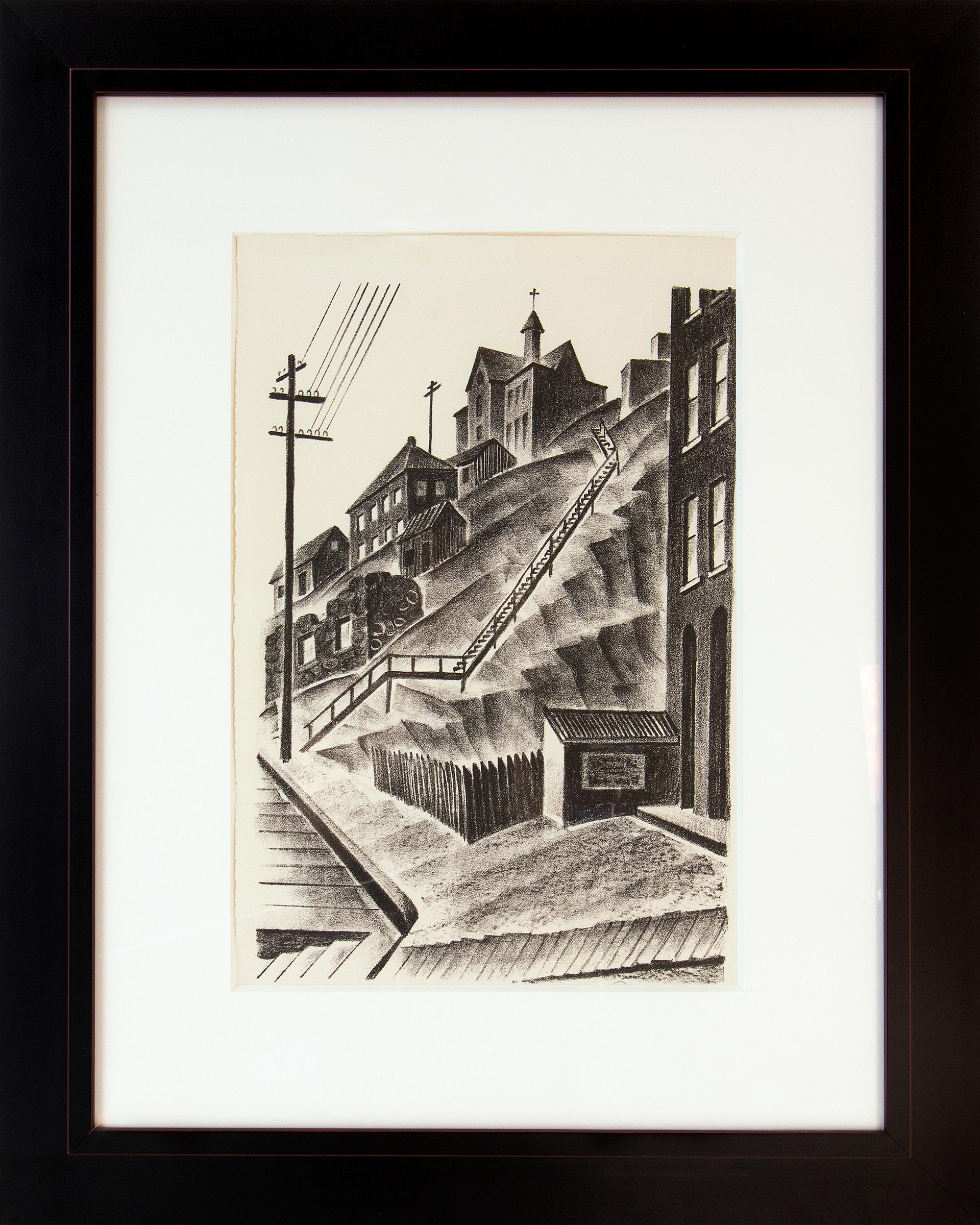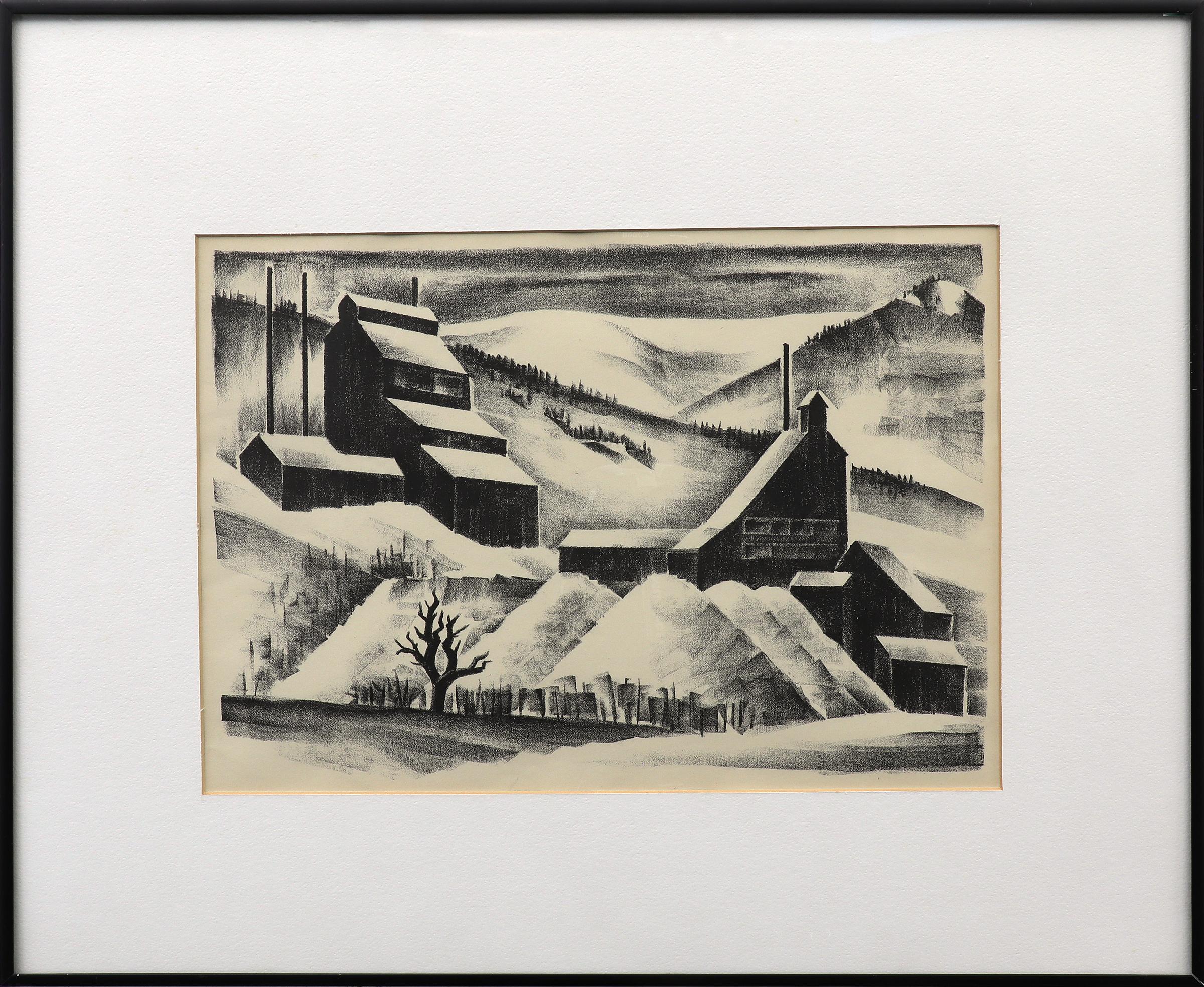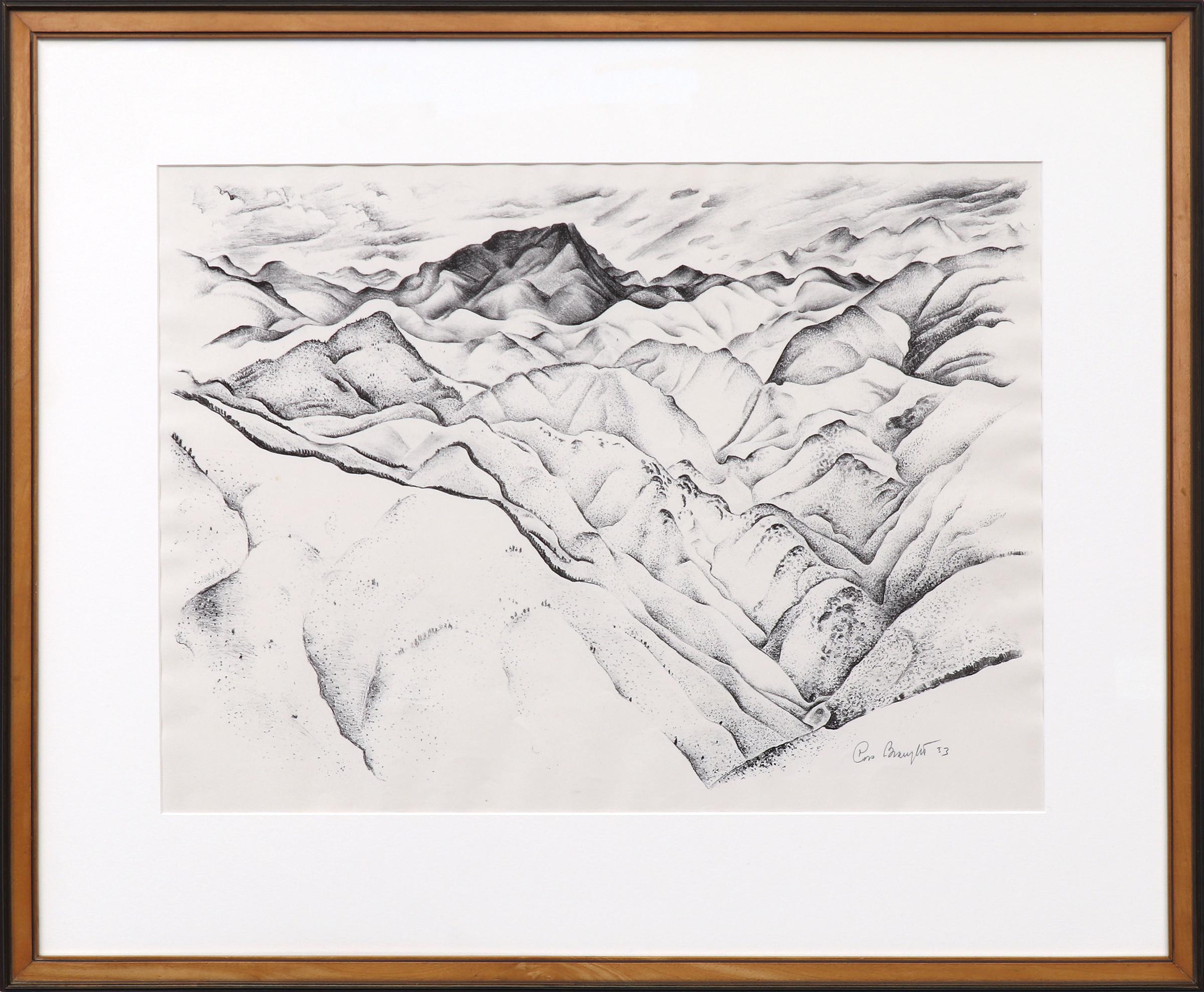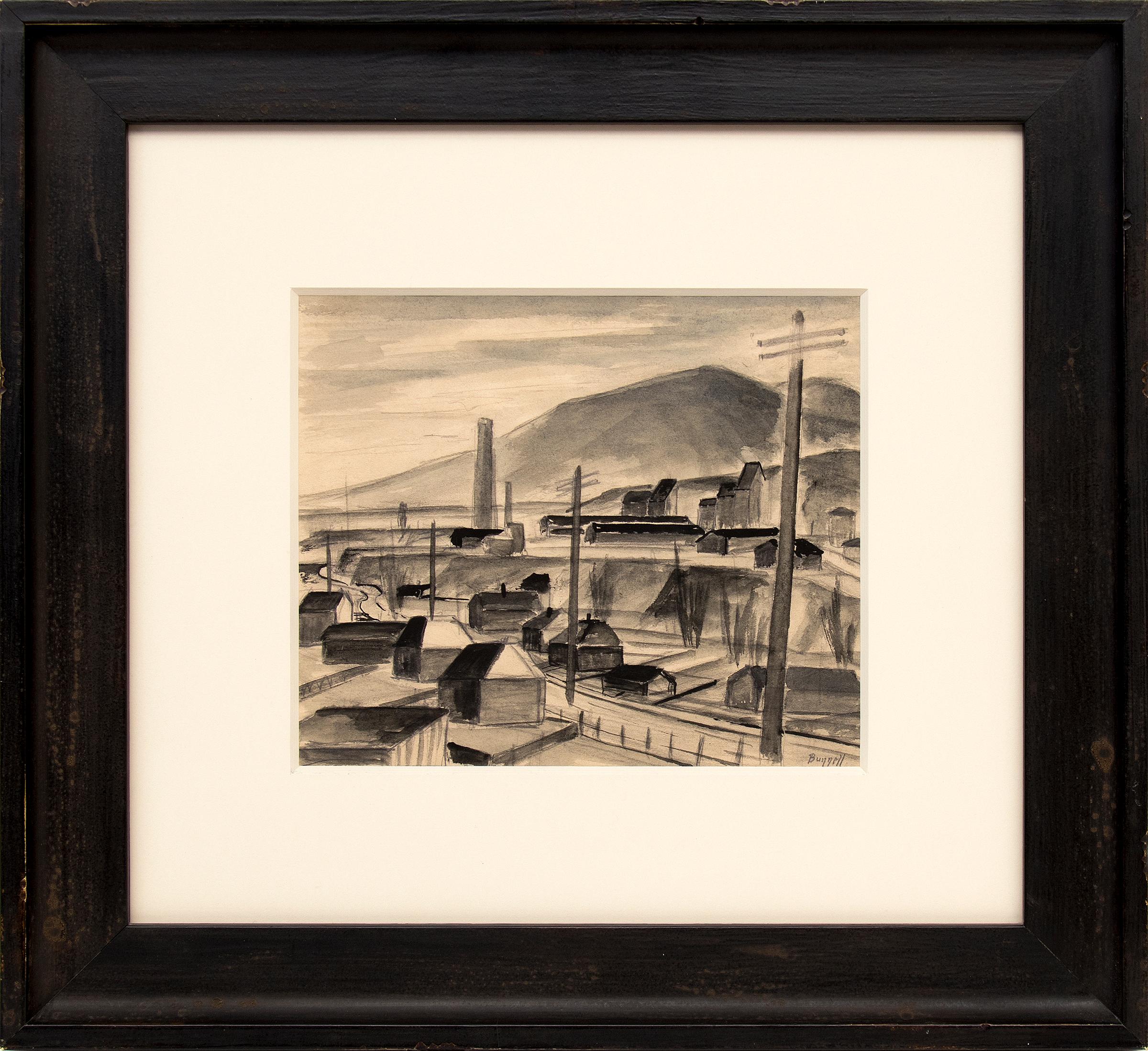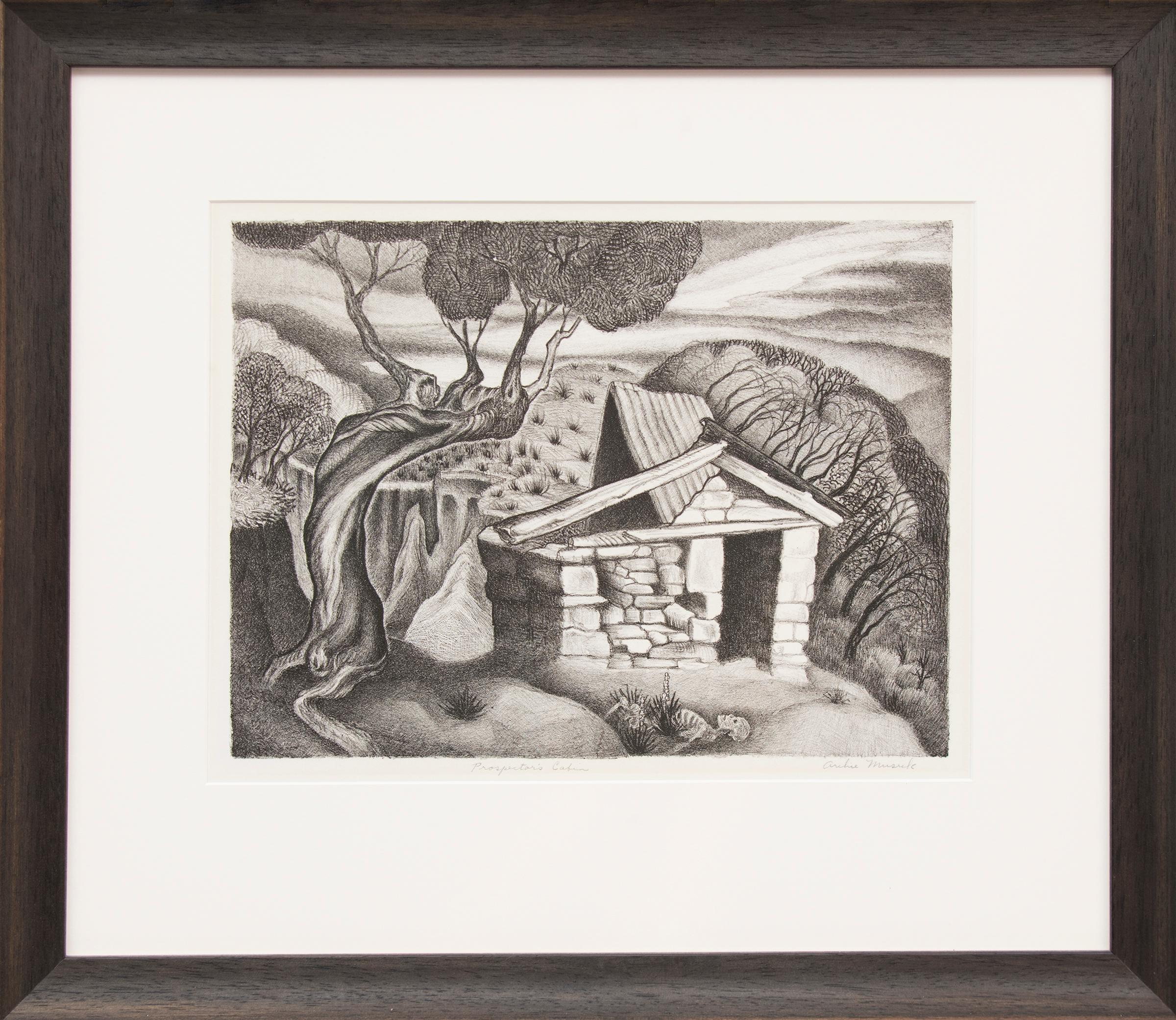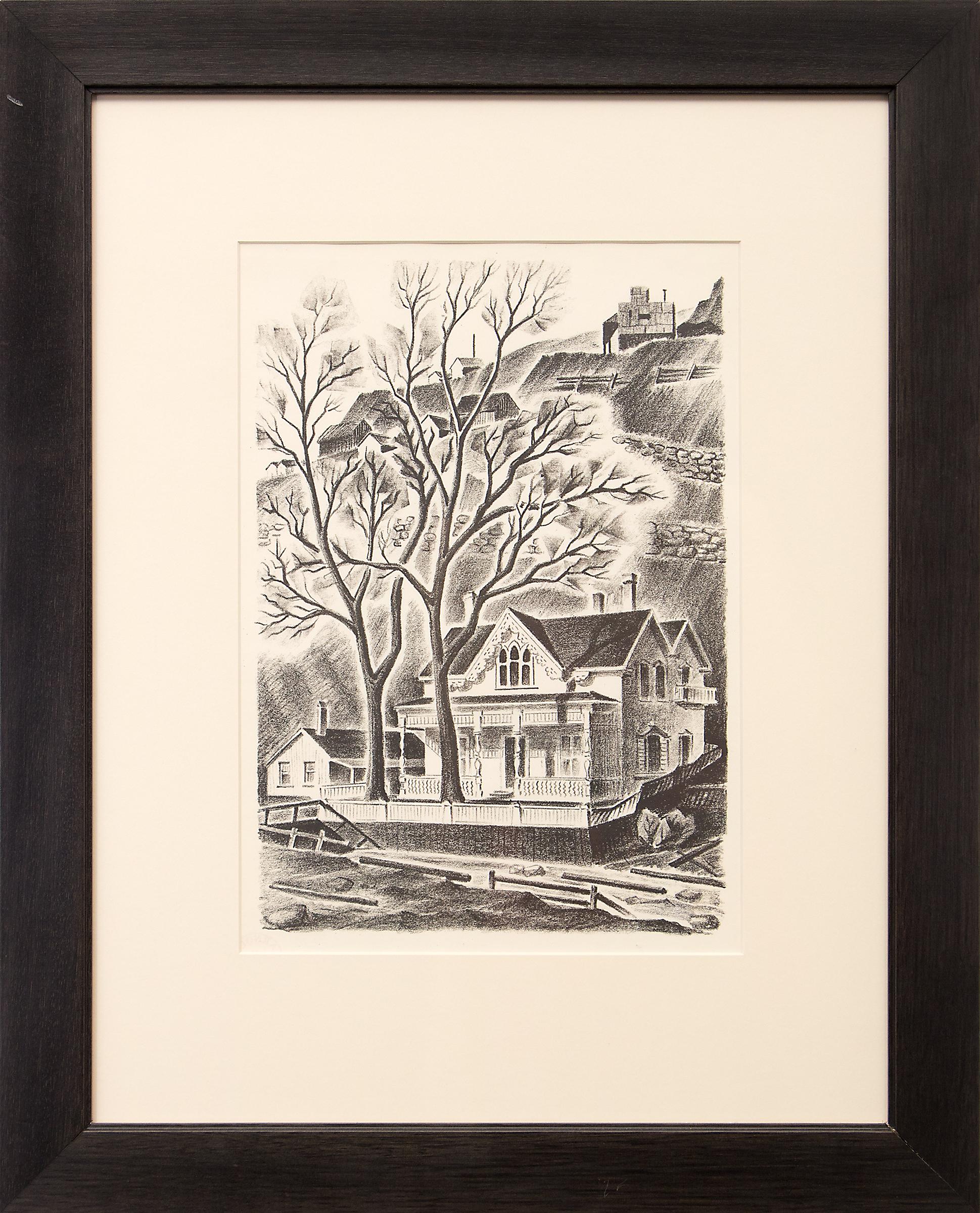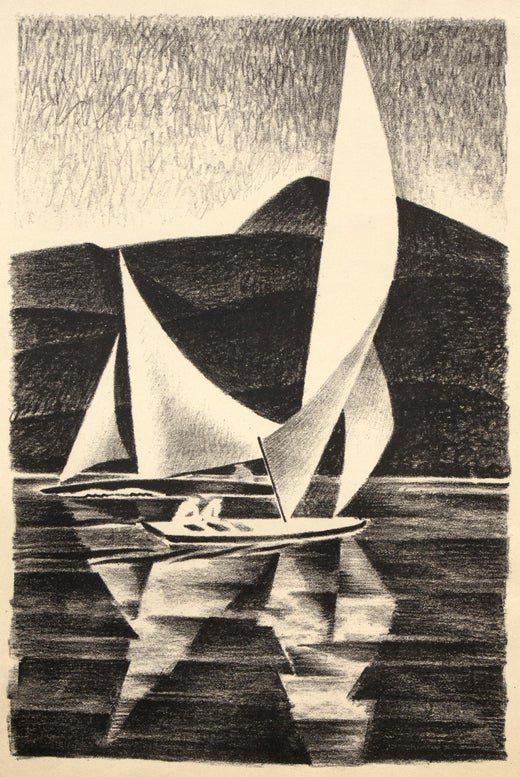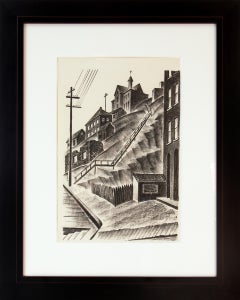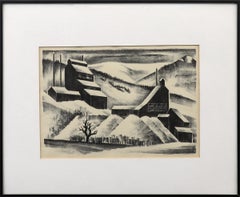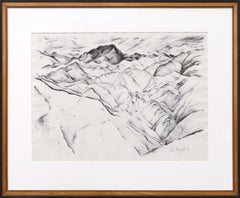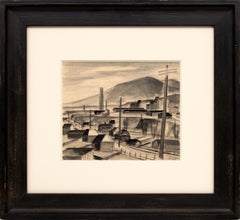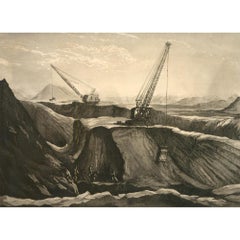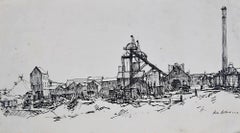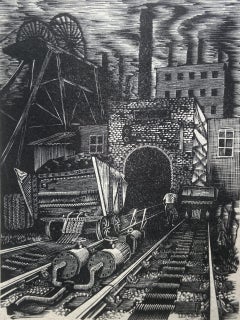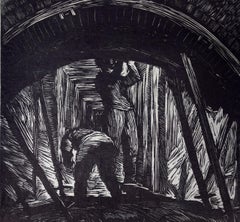Items Similar to Silver Mine, Russell Gulch, CO (12/25) 1930s American Modern Lithograph Print
Want more images or videos?
Request additional images or videos from the seller
1 of 18
Arnold RönnebeckSilver Mine, Russell Gulch, CO (12/25) 1930s American Modern Lithograph Print1933
1933
$2,750
£2,067.27
€2,396.63
CA$3,839.43
A$4,300.36
CHF 2,237.62
MX$52,227.60
NOK 28,367.35
SEK 26,766.71
DKK 17,882.24
Shipping
Retrieving quote...The 1stDibs Promise:
Authenticity Guarantee,
Money-Back Guarantee,
24-Hour Cancellation
About the Item
"Silver Mine, Russell Gulch (12/25)" is a captivating black and white lithograph by American artist Arnold Ronnebeck. The piece features a mining scene in Russell Gulch, Colorado, with a mountain ridge looming in the background. Known for its historical significance, Russell Gulch was a thriving silver mining town during Colorado's Gold Rush era. The lithograph captures the ruggedness and industrious spirit of the area. This piece, which is a reproduction of an oil painting by Ronnebeck, measures 10 ¼ x 14 ¼ inches and comes in a custom frame (20 ½ x 26 ½ inches).
Provenance: Estate of the artist, Arnold Ronnebeck
About the Artist:
Arnold Ronnebeck (1885-1947) was a Modernist sculptor and lithographer, deeply involved in the avant-garde movements of both Europe and America. After studying in Berlin and Paris, he became part of the New York modernist circle, where his works were featured in major exhibitions.
In 1926, Ronnebeck moved to Denver, where he served as director of the Denver Art Museum and created lithographs focusing on Colorado's landscapes and mining towns. His work reflects the modernist Precisionist style, capturing the rugged beauty of the American West with geometric clarity. Russell Gulch was one of the many mining towns that flourished during Colorado’s late 19th-century silver boom. By the time Ronnebeck visited, these towns had already started to fade, but they provided a rich source of inspiration for his art.
Throughout his career, Ronnebeck’s art was exhibited widely, from Europe to major American museums. His notable public sculptures include works in Colorado, Santa Fe, and New York. Ronnebeck's innovative approach to lithography and his lasting influence on the American art scene continue to be celebrated.
- Creator:Arnold Rönnebeck (1885 - 1947)
- Creation Year:1933
- Dimensions:Height: 20.5 in (52.07 cm)Width: 26.5 in (67.31 cm)Depth: 0.5 in (1.27 cm)
- Medium:
- Movement & Style:
- Period:
- Framing:Frame IncludedFraming Options Available
- Condition:
- Gallery Location:Denver, CO
- Reference Number:Seller: 263441stDibs: LU27310680792
Arnold Rönnebeck
Modernist sculptor, lithographer and museum administrator, Rönnebeck was a noted member of European and American avant-garde circles in the early twentieth century before settling in Denver, Colorado, in 1926. After studying architecture at the Royal Art School in Berlin for two years beginning in 1905, he moved to Paris in 1908 to study sculpture with Aristide Maillol and Émile-Antoine Bourdelle. While there he met and befriended American modernist painter, Marsden Hartley, of whom he sculpted a bronze head that was exhibited at the Salon d’Automne in Paris in 1912 and the following year at Hartley’s solo show of paintings at Alfred Stieglitz’s Gallery 291 in New York. After World War I Rönnebeck traveled in Italy with German writer, Max Sidow, and German poet, Theodor Daubler, doing a series of drawings of Positano and the Amalfi Coast that formed the basis for his lithographs on the subject. The death of his finacée, the young American opera singer Alice Miriam in 1922 and his own family’s increasing financial problems in post-World War I Germany led him to immigrate to the United States in 1923. After living briefly with Miriam’s family in Washington, DC, he moved to New York where he became part of the avant-garde circle around Alfred Stieglitz. In the summer of 1925, as the guest of Mabel Dodge Luhan, Rönnebeck first saw Taos, New Mexico, which Marsden Hartley had encouraged him to visit. It was there that he met his future wife, Louise Emerson, an easel painter and muralist. A year later they were married in New York before relocating to Denver. He served as director of the Denver Art Museum from 1926 to 1930 where he invited Marsden Hartley to lecture on Cézanne’s art in 1928. Rönnebeck fostered the development of the museum’s collection of American Indian art and the curation of modernist art exhibitions. In addition to his work at the museum, he was professor of sculpture at the University of Denver’s College of Fine and Applied Arts from 1929 to 1935, and wrote a weekly art column in the Rocky Mountain News. In Colorado, the subject matter of his lithographs became the state’s landscape and its mining towns, as well as Native Americans from the pueblos in neighboring New Mexico. By the early 1930s Colorado’s old mining towns became a popular genre for artists because they were easily accessible, and their architectural components provided a welcome break from the nineteenth-century panoramic landscape tradition and the overwrought cowboy-and-Indian subject matter of the previous generation. As an amateur actor and music enthusiast, Rönnebeck had an additional connection with Central City. In June 1947, some five months before his death, the Denver Art Museum organized a solo exhibition of his sculptures, watercolors and prints. © copyright Stan Cuba for David Cook Galleries
About the Seller
5.0
Gold Seller
Premium sellers maintaining a 4.3+ rating and 24-hour response times
Established in 1979
1stDibs seller since 2013
289 sales on 1stDibs
Typical response time: 13 hours
- ShippingRetrieving quote...Shipping from: Denver, CO
- Return Policy
Authenticity Guarantee
In the unlikely event there’s an issue with an item’s authenticity, contact us within 1 year for a full refund. DetailsMoney-Back Guarantee
If your item is not as described, is damaged in transit, or does not arrive, contact us within 7 days for a full refund. Details24-Hour Cancellation
You have a 24-hour grace period in which to reconsider your purchase, with no questions asked.Vetted Professional Sellers
Our world-class sellers must adhere to strict standards for service and quality, maintaining the integrity of our listings.Price-Match Guarantee
If you find that a seller listed the same item for a lower price elsewhere, we’ll match it.Trusted Global Delivery
Our best-in-class carrier network provides specialized shipping options worldwide, including custom delivery.More From This Seller
View AllWPA-Era Central City, Colorado, 1930s Modernist Lithograph, Cityscape 3/25
By Arnold Rönnebeck
Located in Denver, CO
This 1933 lithograph, Central City, Colorado 3/25, by Arnold Rönnebeck, captures the architectural essence of a historic mining town during the Great Depression. Rendered in black an...
Category
1930s American Modern Figurative Prints
Materials
Lithograph
$1,350 Sale Price
50% Off
Mine Near Continental Divide – 1930s Winter Landscape of Colorado Mountains
By Arnold Rönnebeck
Located in Denver, CO
This rare 1933 lithograph by renowned modernist artist Arnold Rönnebeck captures a dramatic black-and-white winter scene of a Colorado mountain mine, blanketed in snow. The bold cont...
Category
1930s American Modern Landscape Prints
Materials
Lithograph
1933 American Art Lithograph, Clear Creek Canyon by Ross Braught, Colorado
By Ross Eugene Braught
Located in Denver, CO
This striking original lithograph, Clear Creek Canyon I (Colorado), was created in 1933 by acclaimed American artist Ross Eugene Braught (1898–1983). A master of landscape and form, ...
Category
1930s American Modern Landscape Prints
Materials
Lithograph
Golden Cycle Mill Colorado WPA Mining Watercolor, 1940s Grayscale Artwork
By Charles Ragland Bunnell
Located in Denver, CO
Original 1940s grayscale watercolor painting by American artist Charles Ragland Bunnell, capturing a semi-abstracted view of the Golden Cycle Mill in Colorado Springs, Colorado. Painted in subtle shades of black and gray, this unique WPA-era landscape combines industrial subject matter with expressive, modernist style. A striking piece of American regionalist art from the mid-20th century.
The work is presented in a custom black frame.
Framed dimensions: 18" H x 19 ½" W x 1 ⅜" D
Sight size: 8 ⅛" H x 9 ⅝" W
The Golden Cycle Mining and Reduction Company, depicted in this piece, was a major part of Colorado's mining boom in the early 20th century. Located in Colorado City (now part of Old Colorado City), the mill played a significant role in the region’s gold production and industrial development.
About the Artist: Charles Ragland Bunnell (1897–1968)
Charles Bunnell was a pivotal figure in Colorado’s 20th-century art scene. He worked across multiple styles—from representational landscapes to fully abstract compositions—and was one of the few artists in Colorado to successfully embrace the evolving trends of Modernism, Surrealism, and Abstraction after WWII.
Bunnell studied under notable artists at the Broadmoor Art Academy, including Ernest Lawson and Birger Sandzén. His early works, including regional landscapes and mining scenes like this one, showcase a mix of American Scene painting and semi-abstract structure. He later became known for his bold experimentation with color, form, and geometry, producing both expressive oils and ink-watercolor series such as Black and Blue.
He participated in multiple New Deal art...
Category
1940s American Modern Landscape Paintings
Materials
Watercolor
"Prospector's Cabin" – 1937 WPA-Era Lithograph by Archie Musick, Modernist Art
By Archie Musick
Located in Denver, CO
This original, signed lithograph titled "Prospector's Cabin" was created circa 1937 by acclaimed American Modernist artist Archie Musick (1902–1978). A powerful example of WPA-era ar...
Category
1930s American Modern Landscape Prints
Materials
Lithograph
Arnold Ronnebeck Lithograph of Gregory Point, Colorado, 1930s Modernist Print
By Arnold Rönnebeck
Located in Denver, CO
This original 1930s lithograph by renowned modernist artist Arnold Ronnebeck (1885–1947) captures a historic home at Gregory Point, near Central City, Colorado. Part of a limited edi...
Category
1930s American Modern Landscape Prints
Materials
Lithograph, Paper
You May Also Like
Marion Rhodes (1907-1998) - 20th Century Aquatint, Open Cast Coal Mining
Located in Corsham, GB
An accomplished aquatint print depicting industrial work at Over Hulton in Greater Manchester. Signed and titled in graphite below the plate line. On paper.
Category
20th Century Landscape Prints
Materials
Aquatint
$244 Sale Price
20% Off
Peter Collins ARCA Colliery Mining Scene pen and ink factory England sketch
By Peter Collins ARCA
Located in London, GB
To see our other Modern British Art, and our other Peter Collins, scroll down to "More from this Seller" and below it click on "See all from this Seller" - or send us a message if yo...
Category
1950s Modern Landscape Drawings and Watercolors
Materials
Ink
Colliery Scene, Lancashire, 20th Century British Artist, Wood Engraving
Located in London, GB
Wood Engraving on paper, signed and entitled below artwork
Image size: 6 1/4 x 4 1/2 inches (16 x 11.5 cm)
Mounted and framed
This print depicts a scene of a colliery, that is of a ...
Category
20th Century Modern Figurative Prints
Materials
Engraving
"Mine Shaft", Soviet Union: An Early 20th C. Woodcut Engraving by Abramovitz
By Albert Abramovitz
Located in Alamo, CA
This is a signed woodcut engraving entitled "Mine Shaft" created by Albert Abramovitz in 1935, after a trip to the Soviet Union. It depicts two Russian workers constructing a mine sh...
Category
1930s Landscape Prints
Materials
Woodcut
Etching of an industrial landscape by Auguste Brouet, 1925
By Auguste Brouet
Located in Kenilworth, IL
A very richly printed etching of an industrial site. Archival mount and framed. Auguste Brouet studied in Paris in the late 1880’s and followed with a career in book illustration. Th...
Category
Vintage 1920s French Prints
Materials
Paper
Harry Sternberg Original Pencil Signed Etching, 1929, "Roundhouse #1"
By Harry Sternberg
Located in Phoenix, AZ
New York and California Artist, Harry Sternberg (1904-2001) Original Etching created 1929.
Pencil Signed lower right, pencil titled lower left. Edition size is seen lower center: 40 ...
Category
Early 20th Century Abstract Prints
Materials
Paper
More Ways To Browse
19th Century Black And White Lithograph
Jean Marais Lithograph
Keith Haring Signed Lithograph
Marc Chagall 1980
Norman Rockwell Signed Prints
Pas De Deux
George Burns
Igor Stravinsky
Jean Cocteau Book
Kaws Take
Nara Yoshitomo
Notre Dame Lithograph
Paper Press Machine
Renoir Etching
After Picasso Tapestry
Boston Vintage Posters
Monkey Lithograph
Painted Pennsylvania Box
